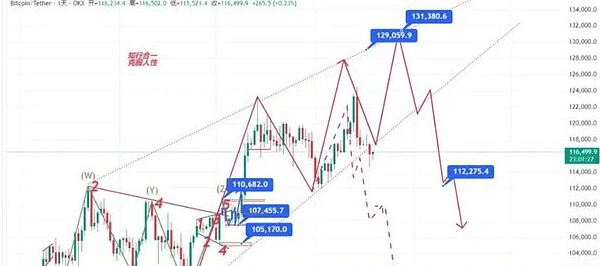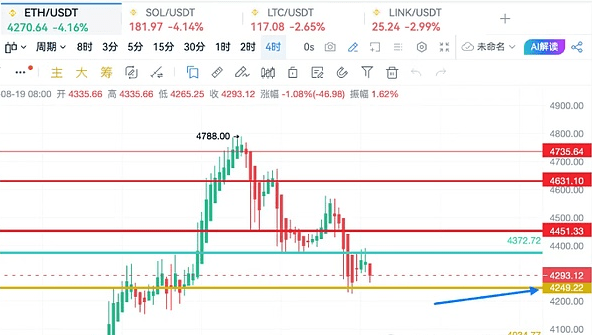Recent price fluctuations: In August 2025, ETH prices experienced significant volatility. On August 11, ETH prices broke through $4800, approaching historical highs, but then corrected. On August 15, ETH fell below the upward trend line on the 4-hour chart, and technical analysts warned of potential deep washout or medium-term correction risks. Some traders believe that if it breaks key support levels (like $116148), ETH could drop to $110694 or even lower.
Institutional and Wall Street influence: Wall Street strategists like Tom Lee and Cathie Wood strongly favor ETH, believing it has the potential to surpass Bitcoin. Significant institutional capital has flowed into ETH spot ETFs, with BlackRock purchasing 150,000 ETH in a single day on August 11, 2025, pushing ETF sizes to a historical high. Institutional views suggest that ETH has a higher level of institutionalization and its ecological advantages (such as stablecoin issuance and DeFi infrastructure) support long-term growth.
Market divergence: There is a serious divide in the market about whether ETH can break through historical highs. Some analysts (like Sherpa and Liu Yudong) believe ETH is close to its peak and a pullback may occur after institutional buying, while others (like Vivian and Reetika) are bullish, believing ETH could break through $4800 and lead altcoins higher.

Ethereum fundamentals and long-term prospects
Consensus mechanism change: In September 2022, ETH transitioned from Proof of Work (PoW) to Proof of Stake (PoS), a change with profound implications. The PoS mechanism reduces energy consumption, but some analysts point out that its inflationary pressure may hinder long-term growth, especially for retail investors.
Ecology and competition: As the 'second' cryptocurrency, ETH's advantages lie in the maturity of its consensus mechanism and infrastructure. However, its growth potential is considered less durable than Bitcoin (BTC), due to BTC's fixed supply and high acquisition costs, while ETH's inflation mechanism may dilute its value. Some opinions suggest that ETH is more suitable for institutional hoarding, with higher risks for retail participation.
Technical challenges: ETH's Layer 2 (L2) scalability issues have not been fully resolved, affecting its practicality as a 'world computer'. Additionally, ETH's on-chain activity needs to further increase to support the continued influx of institutional capital.

Investment advice and risk warning
Short-term operations: Technical analysts advise caution in chasing highs and focusing on key support levels (such as $4000 and $4200). If ETH breaks below the trend line, it may enter a correction phase, and investors should be wary of deep washout risks.
Long-term strategy: Institutional investors tend to hold ETH for the long term, believing that it has a high degree of institutionalization and clear ecological advantages. However, some opinions warn that ETH may behave like other altcoins, potentially losing value significantly after a bull market.
Risk factors: ETH prices are significantly influenced by institutional capital flows. If the Federal Reserve lowers interest rates or market sentiment shifts, it could trigger selling pressure. Additionally, ETH's inflation mechanism, increasing competition (such as the rise of the Solana ecosystem), and regulatory uncertainty pose potential risks.

Summary
Ethereum faces dual challenges of institutional capital drives and technical bottlenecks in 2025. Short-term price volatility is severe, with strong bullish sentiment among institutions, but technical indicators show rising top risk. In the long term, ETH's ecological advantages and institutionalization trends support its potential, but the inflation mechanism and competitive pressures may limit its path to surpass Bitcoin. Investors need to closely monitor institutional movements, technical support levels, and changes in market sentiment to avoid chasing highs in peak areas.
ETH BTC



